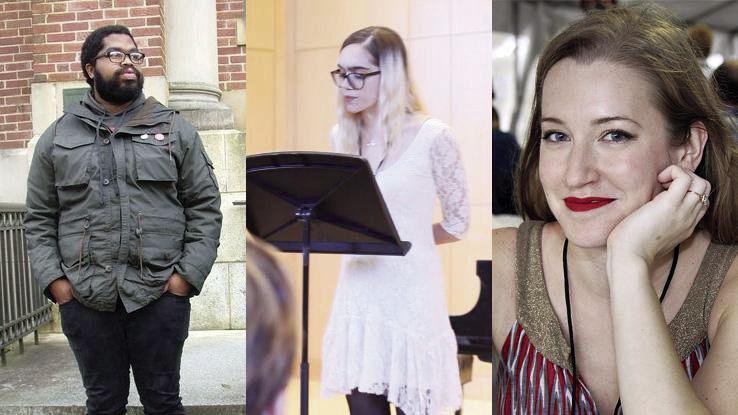D.H. Hill’s Fishbowl Forum has grown in popularity with students due to its large, adjustable workspaces, easy access to the Creamery and open view of Hillsborough Street and the evening sky. With this in mind, it seemed natural for it to be the location of choice for an art and writing workshop.
“Art United: Fostering Equity and Inclusivity through Writing and Art” was a poetry and illustration workshop that took place on Thursday. The event was organized by Belle Boggs, an English professor, and led by poets Tyree Daye and Leila Chatti — both of whom are NC State alumni — and Kristen Radtke, a graphic memoirist and editor for Sarabande Books and TriQuarterly Magazine.
Prior to its debut, Boggs said that she has been motivated to put together a workshop focusing on poetry and graphic art for over a year.
“Around that time, we had a lot of issues arising on campus with campus culture and aggressions,” Boggs said. “I began to think about the usefulness of a workshop like this to make a space for students to express themselves and communicate to other students about what their experiences were on campus.”
Several English Master of Fine Arts students were sought out by Boggs to help facilitate the event. One of them, Threa Almontaser, talked about her pivotal role in the workshop’s conception.
“[Boggs] asked if I would be willing to write a letter added to the proposal explaining my experience at State as an undergrad when it came to open culture, especially after the Chapel Hill shootings and the Trump election,” Almontaser said. “I feel like the students at State got a little more amplified — the stares and the remarks I was getting — so I wrote about my experience inside and outside the classroom on campus.”
The workshop started with some introductions from Chatti, Daye and Radtke where they showed the audience some of their craft; Chatti and Daye read poems from their most recent collections — Tunsiya Amrikiya and River Hymns, respectively — and Radtke shared a few pages from her graphic memoir “Imagine Wanting Only This.”
After they finished, they had the participants follow suit. The attendees were split into two groups depending on whether they wished to draw or write poetry.
Once the participants found their stations, the group leaders asked icebreaker questions, which served to both ease everyone’s nerves and jumpstart their imaginations before the crafting sessions began.
To kick off the poetry session, Daye led with a modified version of a lecture from his Beginner Poetry class, which focused on the balance between imagery and emotional narratives within writing. This was followed by a prompt involving randomly selected words and a phrase for the participants to construct a poem from.
Chatti led the second half of the workshop with a lecture focusing on balancing the generic and specific details used in narrative poems, especially in relation to the writers’ personal experiences. Her exercise focused on having the participants unashamedly explore their identities as they perceive them and conveying them in their writing in a way that can be visualized, if not understood.
Each person wrote a poem for both prompts. Meanwhile, Radtke’s group worked on graphic memoirs that captured pieces of their lives and personalities using variations of illustration and photography.
Once the crafting sessions completed, everyone reconvened and were given more time to work on their drafts. The poets in training were even encouraged to seek out participants from outside of their group to collaborate with, intending to have them inspire each other. Several students produced entirely new drafts during this time that complimented their teammates’ work.
The attendees spent the final half hour of the workshop volunteering to share the drafts they completed in front of everyone. The participants’ satisfaction with the workshop was completely visible by the end; each project, including those made by people unfamiliar with their chosen medium, was met with raised eyebrows and well-deserved applause, especially from Boggs and the group leaders.
Once the volunteers finished, Boggs, Daye, Chatti and Radtke gave everyone closing remarks with knowing smiles on their faces. For three hours they, along with the facilitators, allowed these people to feel at home in an environment that can often feel foreign or even hostile. While the light faded from the evening sky by the workshop’s end, it never left the eyes of the attendees.
The participants sent the work they completed to Boggs after Art United’s conclusion. All of it will be featured at a follow-up gallery at Hunt Library’s Teaching and Visualization Lab on April 10 at 7 p.m.













